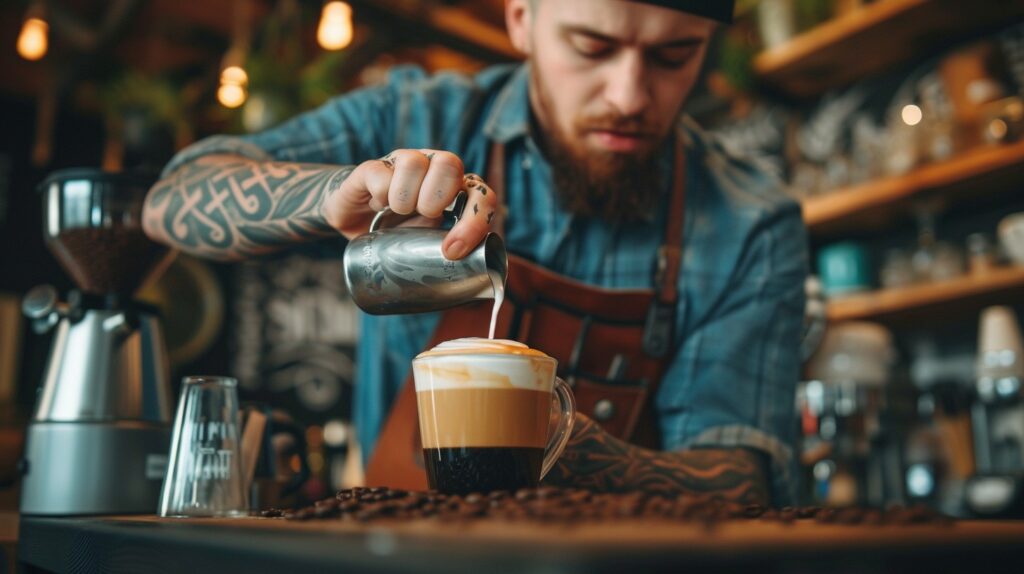
The Fascinating History and Endless kinds of Coffee
Coffee is one of the most popular potables in the world, enjoyed by millions of people every day. But have you ever wondered about the fascinating history and inconceivable diversity of coffee? Let’s dive into the world of coffee and explore its origins, elaboration, and the numerous different types and flavors that live.
Origins in Ethiopia
Coffee’s origins can be traced back to the ancient coffee timbers of Ethiopia, where legend says a scapegoat herdsman named Kaldi first discovered the amping goods of coffee sap. In the 15th century, coffee was being cultivated in the Yemeni quarter of Arabia, where it gained fashionability as a stimulating drink.
Spread to the West
Coffee was brought to Europe in the 17th century, where it snappily came a popular drink in coffeehouses. These early coffeehouses weren’t only places to enjoy a mug of coffee, but also capitals for social commerce, business dealings, and political converse. The first coffeehouse in England opened in Oxford in 1650, and by 1675 there were further than 3,000 coffeehouses in London alone.
The Rise of Coffee Cultivation
As demand for coffee grew, it began to be cultivated in other corridor of the world. In the early 18th century, the Dutch introduced coffee to Java and Sumatra in Indonesia, and by themid-19th century, coffee had come one of the world’s most precious goods. moment, coffee is grown in over 70 countries, with Brazil being the largest patron, followed by Vietnam and Colombia.
The Arabica and Robusta kinds
There are two main species of coffee sap Arabica and Robusta. Arabica sap are generally considered to be of advanced quality, with a sweeter, more complex flavor. They’re grown at advanced elevations and are more susceptible to complaint and pests. Robusta sap, on the other hand, are more hardy and can be grown at lower elevations. They’ve a stronger, more bitter flavor and contain further caffeine than Arabica sap.
Brewing styles
There are numerous different ways to brew coffee, each with its own unique characteristics. Some of the most common styles include
drop brewing Hot water is poured over ground coffee, which also drips through a sludge into a pot or pail.
French press Coarsely ground coffee is steeped in hot water and also pressed through a mesh sludge.
Espresso Finely base coffee is brewed under pressure, performing in a concentrated, violent shot of coffee.
Pour- over Hot water is sluggishly poured over a sludge filled with ground coffee, allowing for a more controlled birth.
Flavors and Repasts
Coffee sap can be roasted to different degrees, performing in a wide range of flavors and aromas. Light repasts have a brighter, more acidic flavor, while dark repasts have a deeper, more complex taste with notes of caramel or chocolate. Coffee can also be seasoned with a variety of constituents, similar as vanilla, hazelnut, or pumpkin spice.
The Health Benefits of Coffee
While coffee has long been associated with caffeine dependence and jitters, recent exploration has shown that it may actually have some health benefits. Coffee is rich in antioxidants and has been linked to a lower threat of type 2 diabetes, Parkinson’s complaint, and certain types of cancer. still, it’s important to consume coffee in temperance, as inordinate consumption can lead to wakefulness, anxiety, and digestive issues.
The Global Coffee Culture
Coffee has come an integral part of numerous societies around the world. In Italy, espresso is a way of life, with people enjoying a quick shot of coffee at the bar throughout the day. In Japan, the traditional tea form has been acclimated to include coffee, with a focus on the perfect medication and donation of the drink. In the United States, coffee has come a symbol of convenience and on- the- go culture, with drive- through coffee shops and single- serve brewing machines.
The Future of Coffee
As the world’s population continues to grow and the climate changes, the future of coffee product is uncertain. numerous coffee- growing regions are facing challenges similar as failure, complaint, and pests, which can hang the livelihoods of the millions of people who depend on coffee for their income. still, there are also numerous instigative developments in the world of coffee, similar as the rise of specialty coffee shops, the growth of fair trade and organic coffee, and the development of new brewing technologies.
In conclusion,
coffee is a fascinating and complex libation with a rich history and a bright future. Whether you prefer a bold espresso or a smooth pour- over, there’s a coffee out there for everyone to enjoy. So coming time you take a belt of your favorite coffee drink, take a moment to appreciate the inconceivable trip that each bean has taken to get to your mug.

